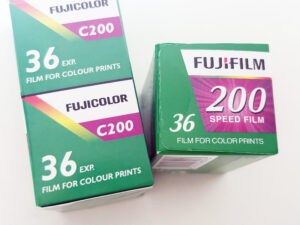There’s a seductive myth in marketing that creativity is king. That the cleverest ad, the wittiest headline, the most eye-catching design, is what wins hearts and market share. But here’s the uncomfortable truth: creativity is important—but it’s not the beginning of marketing. It’s the end. Marketing that works doesn’t begin with a brainstorm. It begins with a mirror held up to the market.
The Myth of Creative Supremacy
Too many marketers are swept up in the glamour of creative awards and viral campaigns, mistaking them as the pinnacle of effectiveness. But advertising is just one tactic. And creativity? It’s the garnish, not the meal. Effective marketing comes from something far less glamorous: hard-nosed diagnosis, strategic discipline, and a deep understanding of the market.
Creativity, in this light, is only as effective as the foundation it’s built on. You can’t polish a flawed insight or dazzle your way out of bad strategy.
Marketing Starts With Diagnosis
If you don’t know your market, you don’t know your job. Diagnosis is the marketer’s core contribution to the business—understanding what the rest of the company often overlooks: the customer.
This means going beyond surface-level demographics and diving into behaviours, needs, desires, and friction points. Through market research and segmentation, marketers build the map. Only then can they decide where to play and how to win.
This diagnostic phase is what anchors marketing in reality, not imagination. It reveals where opportunities truly lie—and where they don’t.
Strategy Is About Salience
Once you’ve mapped the market, you need to choose your position. Strategy is not an abstract corporate exercise. It’s about deciding who you’re selling to, what you want them to think of you, and how you want them to behave.
Here, salience—the likelihood of your brand coming to mind in a buying situation—takes centre stage. That’s your job: to plant two clear, ownable ideas in the customer’s mind, and reinforce them relentlessly. Not five. Not ten. Two. And then commit to them forever.
These could be features, benefits, emotional triggers, or category entry points. The point is: they must be real, they must be resonant, and they must be researched.
Tactics Come Last
Only after diagnosis and strategy are locked in should marketers turn to tactics: pricing, promotion, placement, product refinement—and yes, creativity.
It’s here that creativity can shine, but it must be in service of strategy, not a substitute for it. Creative brilliance can enhance impact, but it cannot compensate for poor insight or fuzzy positioning.
Even pricing, often seen as a commercial or product function, is a strategic lever that depends on marketing insight. Perceived value is shaped by how marketing frames it. The same product can seem like a bargain or a rip-off depending on how you present it.
Creativity as a Multiplier, Not a Magician
The truth is that creativity is a multiplier—not a magician. Research suggests it contributes around 40% to the effectiveness of advertising. That’s significant, but it’s downstream. If your diagnosis is off, your strategy weak, and your tactics scattered, even the most award-winning campaign won’t move the needle.
When marketers skip the fundamentals and jump straight to ideation, they risk doing beautifully crafted work that solves the wrong problem.
Defend the Basics
In a world increasingly obsessed with novelty, marketers need to defend the basics. Market orientation. Segmentation. Positioning. Salience. These aren’t old-fashioned—they’re foundational.
Creativity still has its place. A critical one. But it’s not the hero of the story—it’s the final flourish. The real work of marketing begins earlier, in diagnosis and strategy, where the heavy lifting is done.
So the next time you’re tempted to jump straight into “big ideas,” stop. Ask instead:
- Do I understand the customer better than anyone else in the business?
- Is my strategy clear, narrow, and research-backed?
- Have I earned the right to be creative yet?
Because in marketing, effectiveness is not born in the brainstorm—it’s built in the brief.









































































